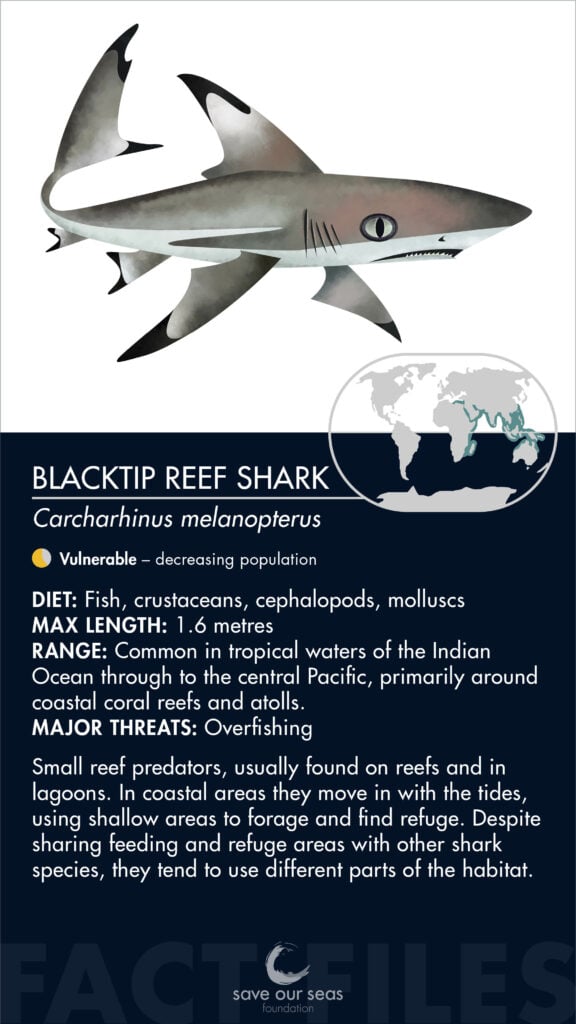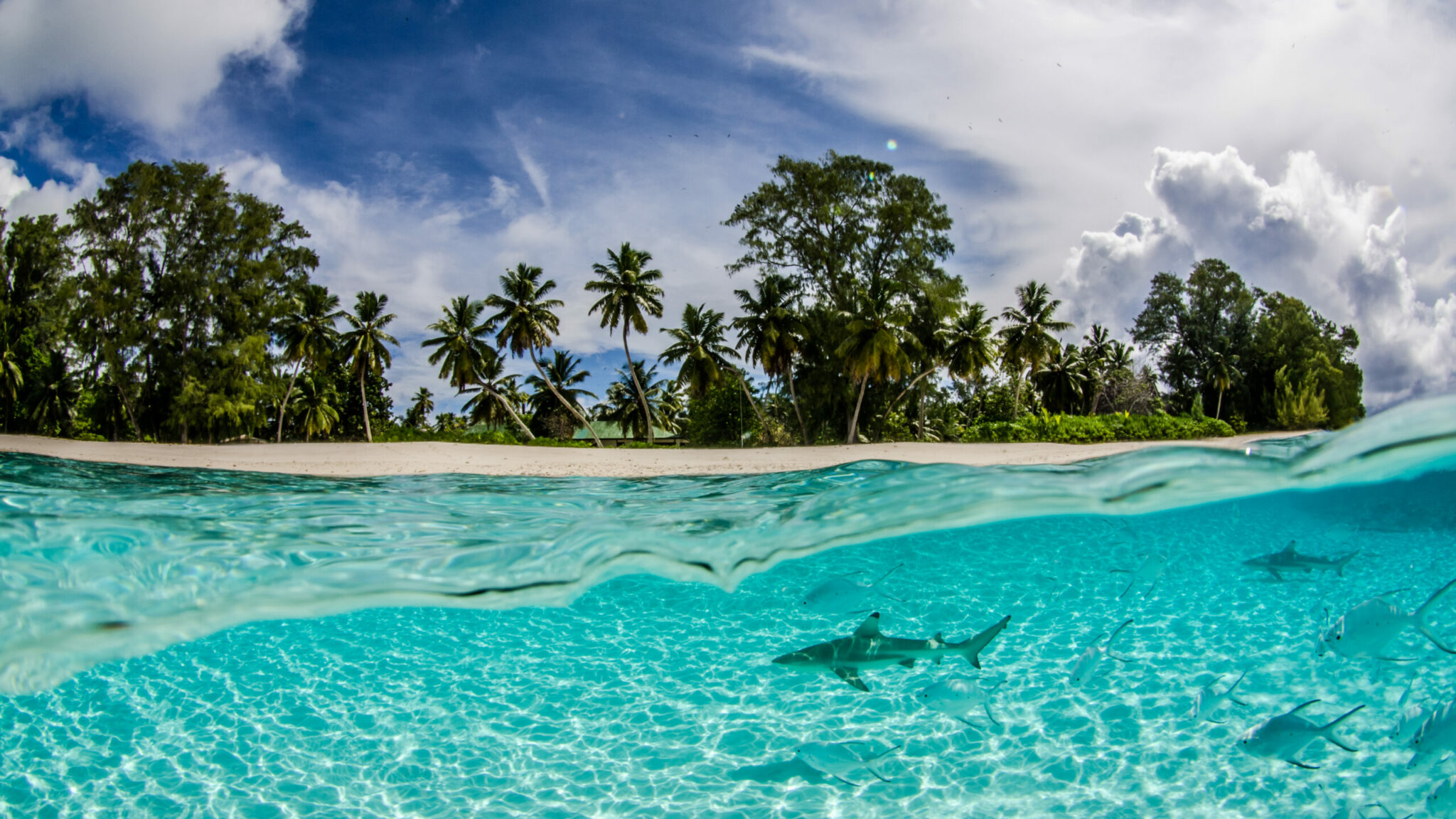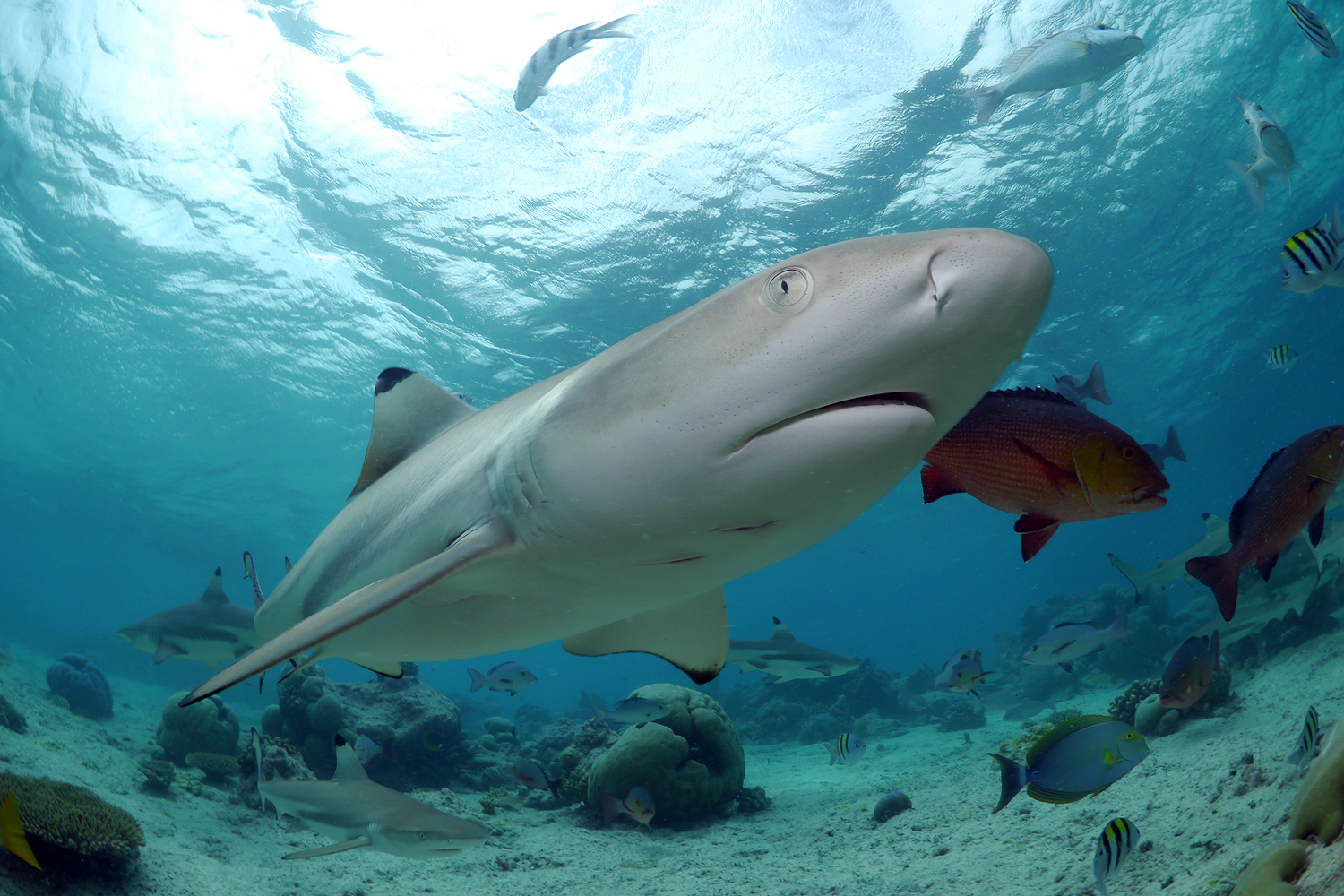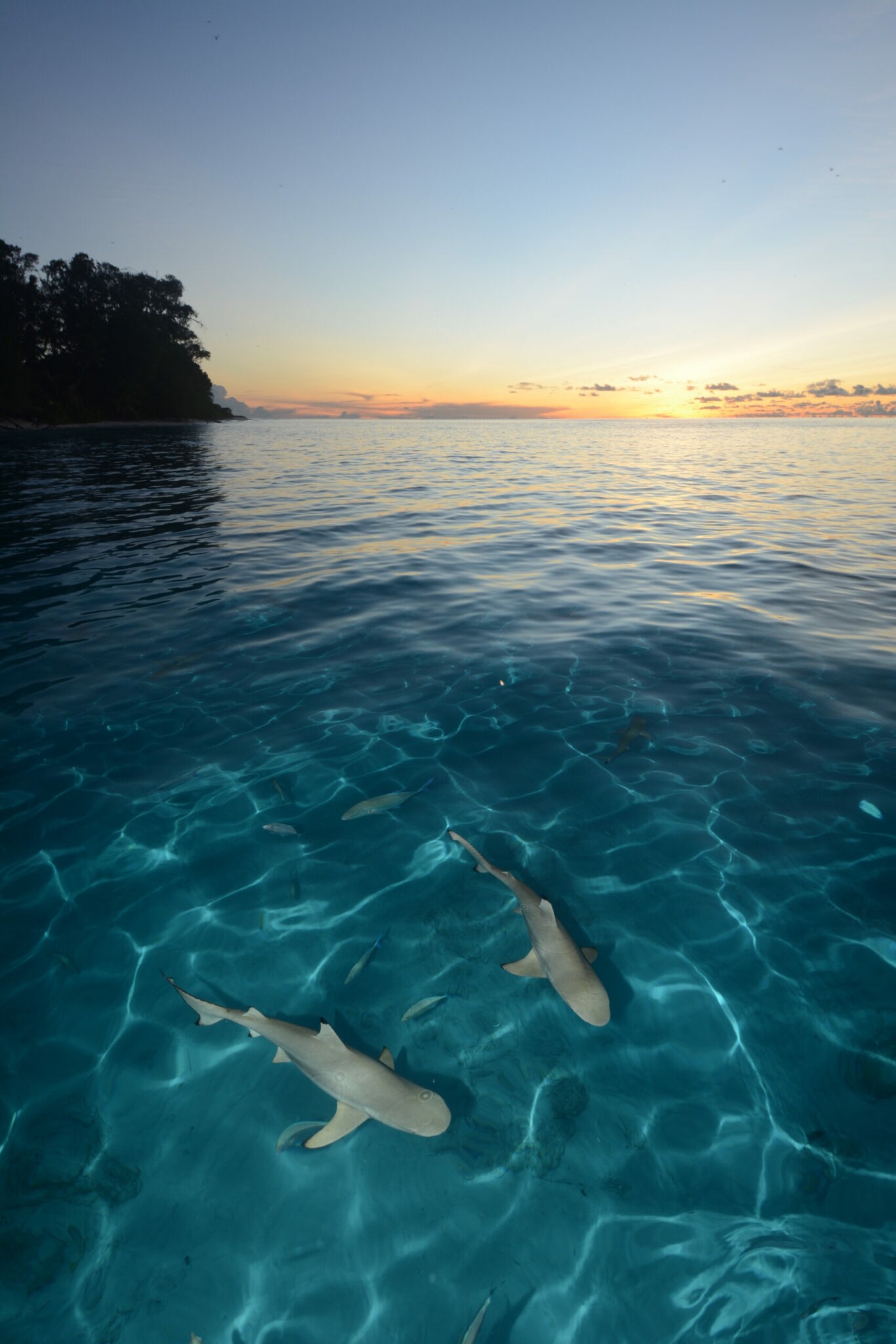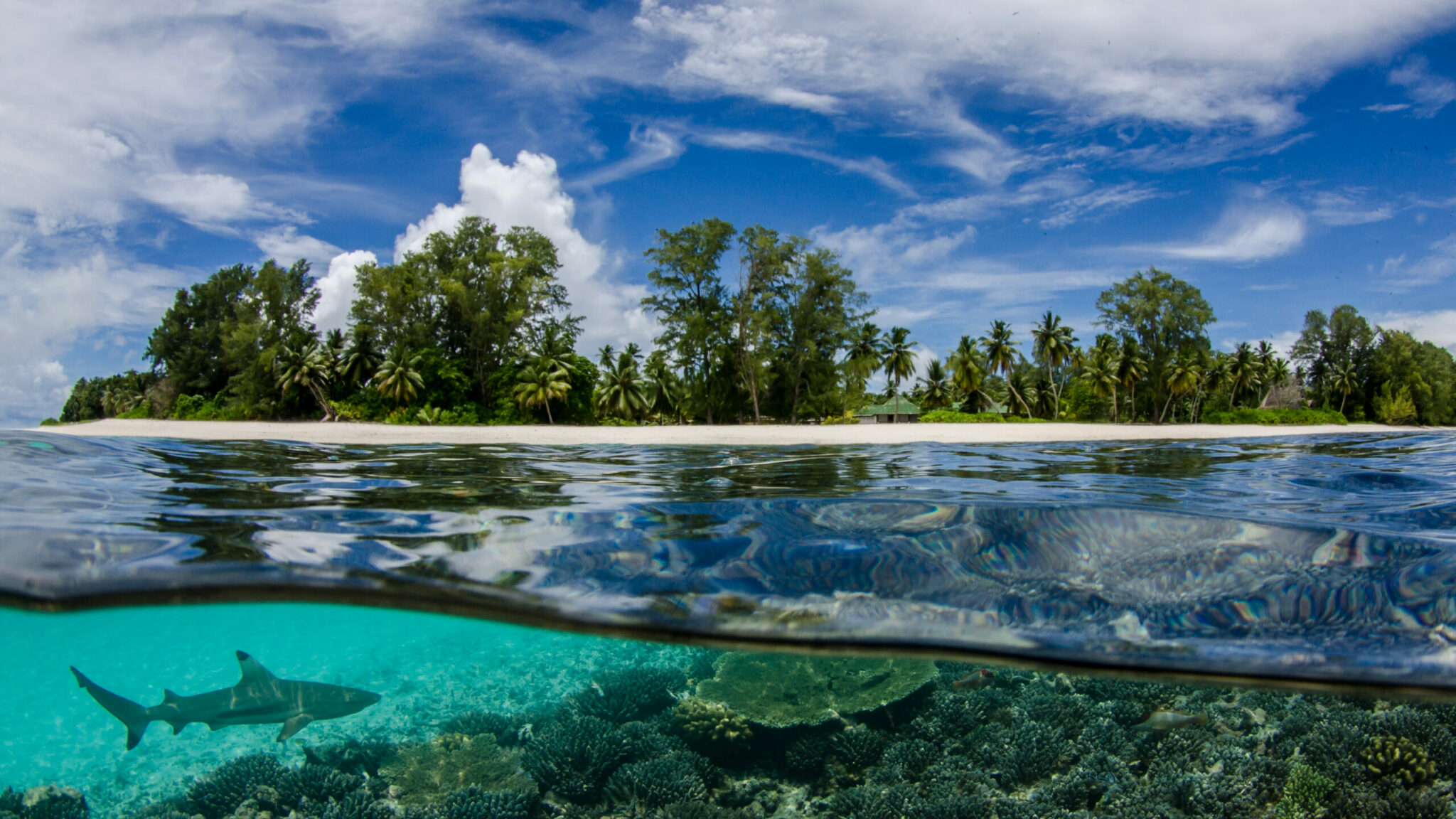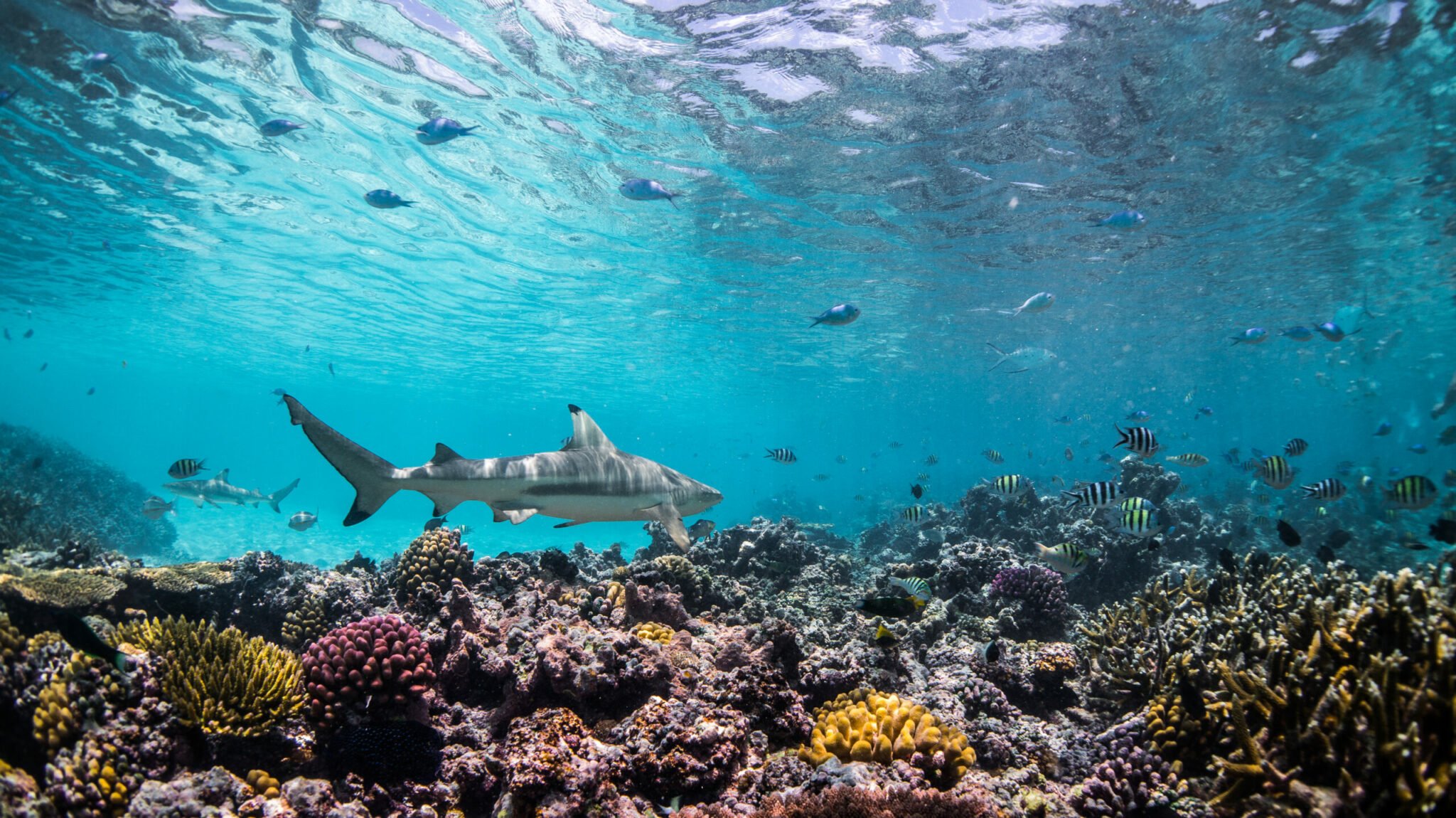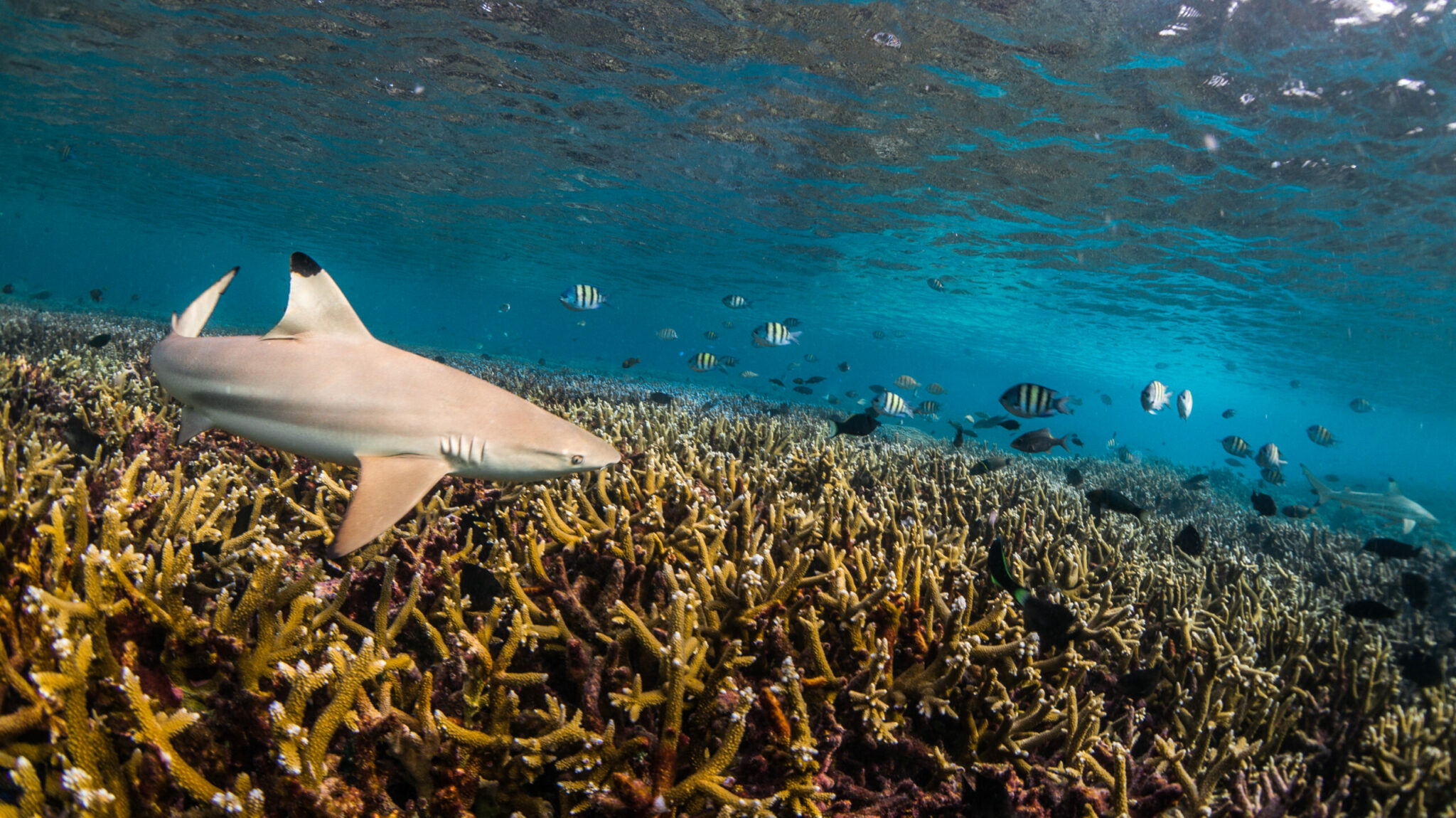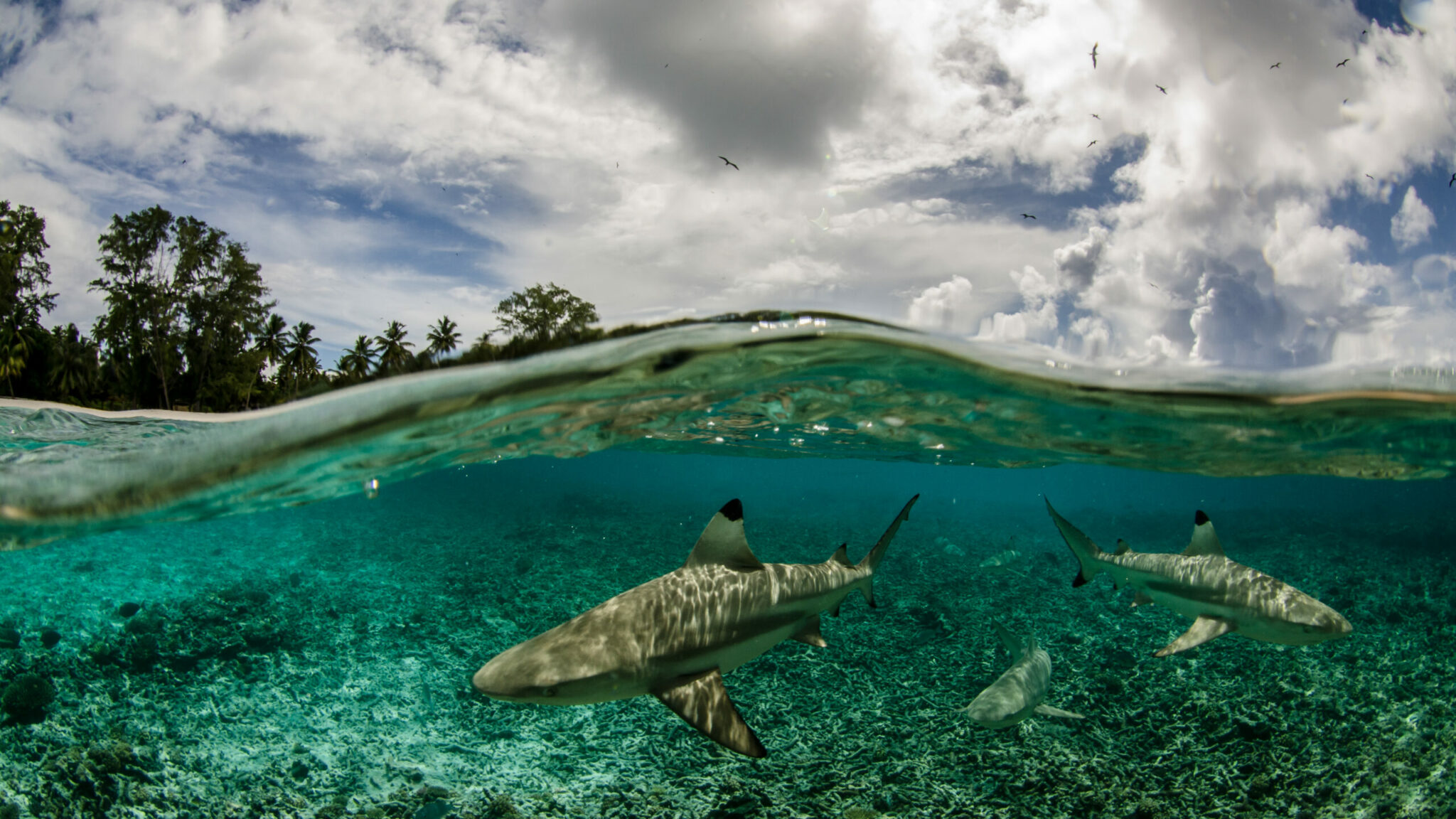Blacktip reef shark
Carcharhinus melanopterus
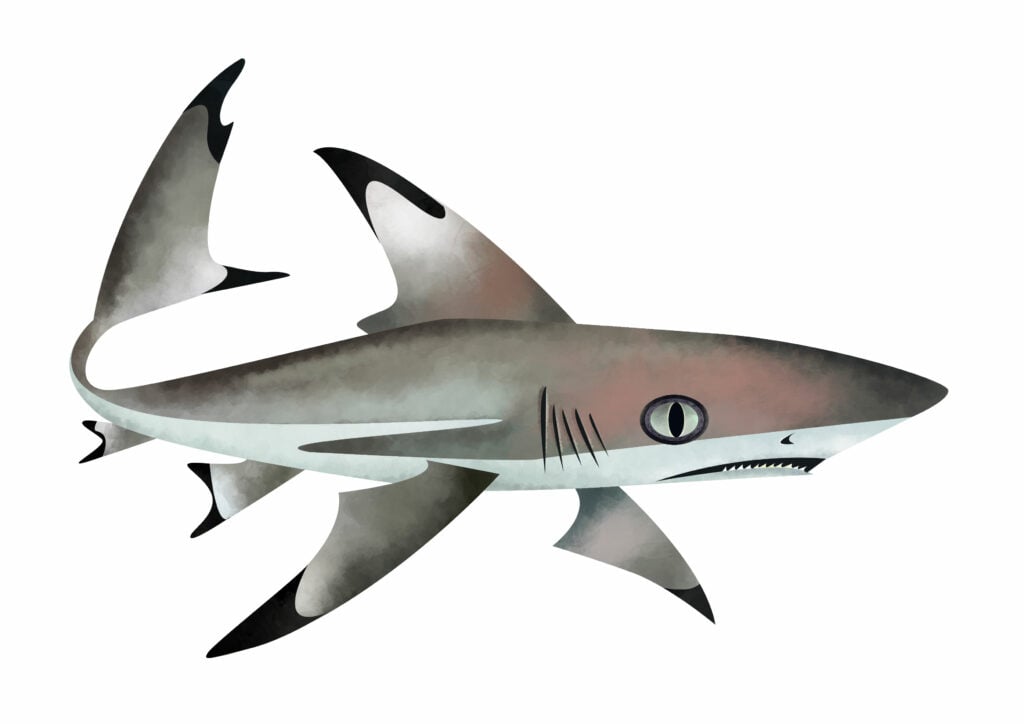

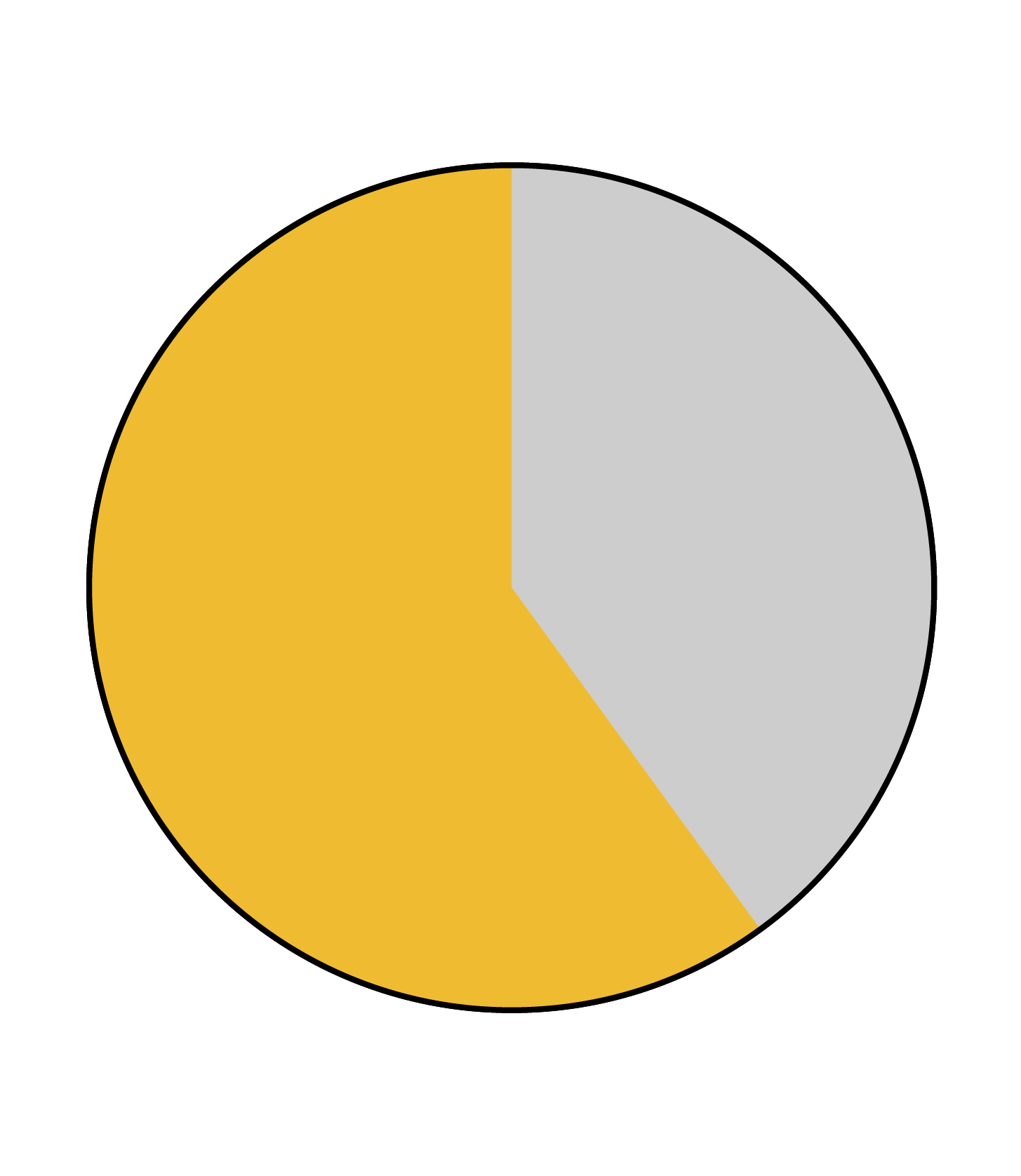
Blacktip reef sharks are small reef predators, usually found on reefs and in lagoons. They often use lagoons and near-shore habitats as nurseries. In coastal areas, they move in with the tides, using shallow areas to forage and find refuge. Despite sharing feeding and refuge areas with other shark species, they tend to use different parts of the habitat.
Identification
The key feature to identifying blacktip reef sharks is the black tip on every one of their fins. The shape of the black marks can be used to identify individuals. Otherwise, they are small (± 1.3 m) and sandy coloured, with a stereotypical body shape.

Special behaviour
Although typically a solitary species, blacktips are frequently seen aggregating with other species that are attracted to the same food sources, a behaviour that perhaps indirectly increases their feeding efficiency.
They have been seen breaching (leaping out of the water), most often on the Great Barrier Reef off the coast of Australia.
Wild observations of potential courtship behaviour for this species suggest that females will release chemical signals to attract males. A male and female will then swim along together for a period of time before mating.
Reproduction
Blacktips are viviparous, meaning they have a placenta and give birth to live young. Typically, 2–4 pups are born after a gestation period of 7–11 months, depending on geographic location (up to 16 months has been reported in some areas). Females have two uteruses for developing the embryos, and once born the pups are 0.30–0.5 m in length.
Habitat and geographical range
Blacktips are common in tropical waters of the Indian Ocean through to the central Pacific, primarily around coastal coral reefs and atolls. There are also reports of them from the Mediterranean, presumably moving from the Red Sea via the Suez Canal.
They occupy shallow waters of coral reefs and are rarely seen offshore or in deeper waters. Their home ranges are very small, often less than 0.5 km2. Juveniles use near-shore habitats such as lagoons and mangrove systems as nurseries. In coastal areas, they move in with the tides, using shallow areas to forage and find refuge. Despite sharing feeding and refuge areas with other shark species, they tend to use different parts of the habitat.

Diet
Blacktips feed mostly on tropical reef fishes and cephalopods. Groups of blacktips have been observed driving schools of mullet close to the shoreline, where they are easier to catch. Blacktips will also eat crustaceans (e.g. crabs) and molluscs (e.g. octopus).

Threats
Blacktips are listed as Vulnerable, largely due to overfishing. Their slow reproduction and highly localised movements make them very susceptible to rapid localised declines. They are caught for their fins, liver, meat and oil. They also rely heavily on healthy coral reef habitats, which are in severe decline worldwide. Due to these threats, this species is estimated to have lost more than 30% of its global population in the past 44 years.
Relationship with humans
Due to their preference for shallow water areas, blacktips often come into contact with humans. By tagging them, scientists have found that they rarely migrate far from a given area. Blacktips are not aggressive, but can be curious and sometimes approach divers and snorkellers. This makes them popular among tourists and a reliable attraction for ecotourism operators.
Conservation
Despite being a vulnerable species, there are currently no species-specific conservation measures to protect blacktips. They do, however, benefit from area-based protection such as marine protected areas and shark sanctuaries.
Fun facts
Although not common, blacktips have been sighted in the Eastern Mediterranean Sea, having travelled there via the Suez Canal.
They are not aggressive, but are curious and will approach divers and snorkellers.
By tagging them, scientists have found that they rarely migrate far from a given area, often remaining within a 0.5 km2 home range.
References
David A. Ebert. et al, 2021, Sharks of the World: A Complete Guide.
IUCN Red List of Threatened Species, Blacktip Reef Shark: Carcharhinus melanopterus
Florida Museum, 2018, Carcharhinus melanopterus
The Nature Conservancy, 2018, Blacktip Reef Shark: Carcharhinus melanopterus
The Shark Research Institute, Blacktip Reef Shark: Carcharhinus melanopterus
